Theoretical and practical considerations in compression hearing AIDS
- PMID: 25425854
- PMCID: PMC4172289
- DOI: 10.1177/108471389600100102
Theoretical and practical considerations in compression hearing AIDS
Figures
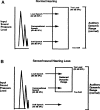


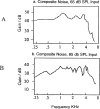






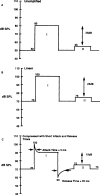



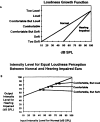




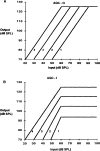

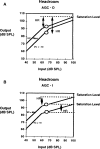
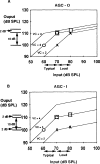


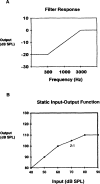

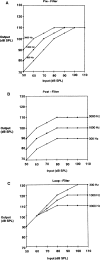



Similar articles
-
Clinical experiments with hearing aids with amplitude compression.Scand Audiol Suppl. 1978;(6):293-314. Scand Audiol Suppl. 1978. PMID: 292145
-
Acoustical and Perceptual Comparison of Noise Reduction and Compression in Hearing Aids.J Speech Lang Hear Res. 2015 Aug 1;58(4):1363-76. doi: 10.1044/2015_JSLHR-H-14-0347. J Speech Lang Hear Res. 2015. PMID: 26090648
-
Effects of frequency compression hearing aids for unilaterally implanted children with acoustically amplified residual hearing in the nonimplanted ear.Ear Hear. 2012 Jul-Aug;33(4):e1-e12. doi: 10.1097/AUD.0b013e31824a3b97. Ear Hear. 2012. PMID: 22531574
-
Noise, amplification, and compression: considerations of three main issues in hearing aid design.Ear Hear. 1994 Feb;15(1):2-12. Ear Hear. 1994. PMID: 8194676 Review.
-
Studies with digital hearing aids.Acta Otolaryngol Suppl. 1990;469:57-69. Acta Otolaryngol Suppl. 1990. PMID: 2192534 Review.
Cited by
-
Curriculum for graduate courses in amplification.Trends Amplif. 1998 Mar;3(1):6-44. doi: 10.1177/108471389800300102. Trends Amplif. 1998. PMID: 25425878 Free PMC article. No abstract available.
-
Development of digital hearing AIDS.Trends Amplif. 1997 Jun;2(2):41-77. doi: 10.1177/108471389700200202. Trends Amplif. 1997. PMID: 25425875 Free PMC article. No abstract available.
-
Effects of compression on speech acoustics, intelligibility, and sound quality.Trends Amplif. 2002 Dec;6(4):131-65. doi: 10.1177/108471380200600402. Trends Amplif. 2002. PMID: 25425919 Free PMC article.
-
Selecting and Pre-setting Amplification for Children: Where Do We Begin?Trends Amplif. 1999 Jun;4(2):72-89. doi: 10.1177/108471389900400207. Trends Amplif. 1999. PMID: 25425890 Free PMC article. No abstract available.
-
Frequency-based multi-band adaptive compression for hearing aid application.Proc Meet Acoust. 2019 Dec;39(1):055004. Epub 2020 Jun 22. Proc Meet Acoust. 2019. PMID: 32714483 Free PMC article.
References
-
- Ahren T, Arlinger S, Holmgren S, Jerlvall L, Johansson B, Lindblad A, Persson L, Petterson A, Sjogren H. (1977). Automatic Gain Control in Hearing Aids: The Influence of Different Attack and Release Times on Speech Intelligibility for Hearing Impaired with Recruitment (Report TA 84). Stockholm: Karolinska Institute
-
- Allen J, Jeng P. (1990). Loudness growth in 1/2 octave bands (LGOB): a procedure for the assessment of loudness. J Acoust Soc Amer 88: 745–753 - PubMed
-
- American National Standards Institute. (1987). Specification of Hearing Aid Characteristics. ANSI S3.22–1987. American National Standards Institute, New York
-
- American National Standards Institute. (1992). Testing Hearing Aids with a Broadband Noise Signal. ANSI S3.42–1992.
-
- Baechler H. (1995). Unpublished data.
LinkOut - more resources
Full Text Sources
